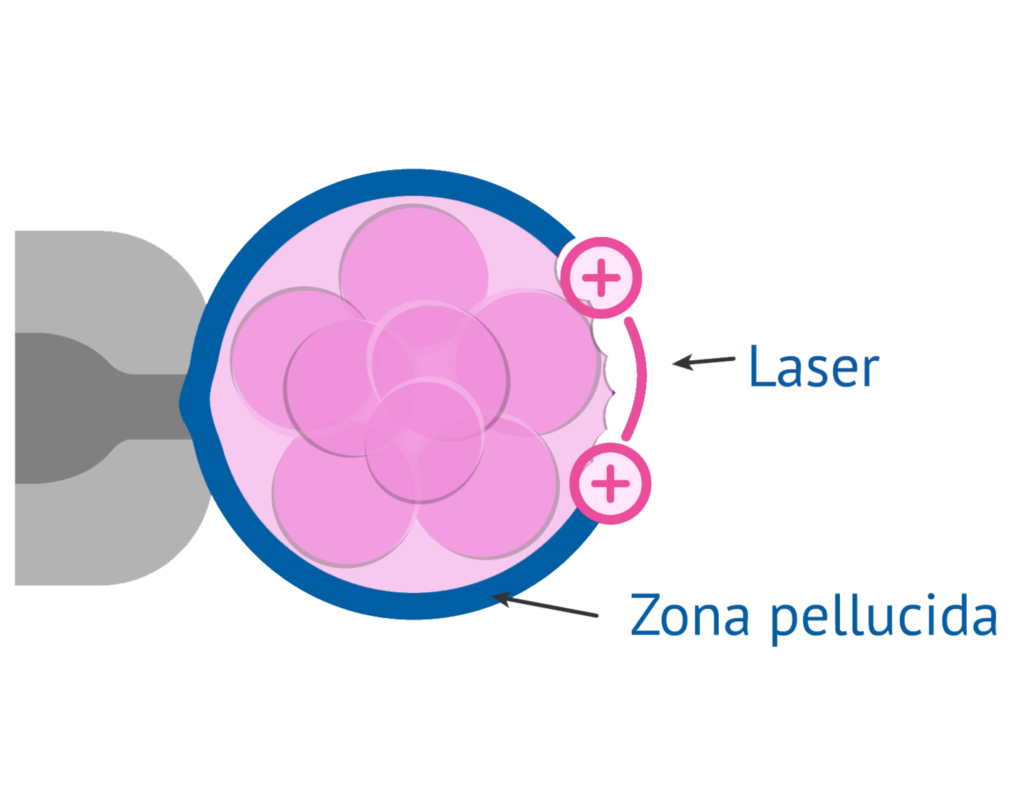Laser-Assisted Hatching (LAH) stands at the forefront of innovative techniques in the realm of assisted reproductive technologies, offering a refined approach to enhance the chances of successful embryo implantation during in vitro fertilization (IVF). This cutting-edge procedure involves the precise application of a laser to create a controlled opening in the outer shell (zona pellucida) of the developing embryo. By facilitating this strategic breach, Laser-Assisted Hatching aims to alleviate potential barriers that may impede the embryo’s ability to break free during the implantation process. As a specialized and minimally invasive procedure, LAH represents a technological evolution within the field of reproductive medicine, demonstrating its potential to improve the outcomes of fertility treatments.
Process of Laser-Assisted Hatching (LAH) in In Vitro Fertilization (IVF):
Laser-Assisted Hatching, with its precision and targeted approach, represents a valuable tool in the arsenal of assisted reproductive technologies, offering hope to those navigating the complexities of infertility and IVF.
Benefits of Laser-Assisted Hatching (LAH):

In conclusion, Laser-Assisted Hatching (LAH) emerges as a significant advancement in the realm of assisted reproductive technologies, holding promise for individuals and couples undergoing in vitro fertilization (IVF). By leveraging precision laser technology to create a controlled opening in the protective zona pellucida, LAH aims to enhance embryo implantation rates, particularly in cases with identified challenges. While offering notable benefits, such as improved fertility outcomes, LAH necessitates careful consideration of potential risks, including embryo damage and ethical concerns. The decision to incorporate LAH into an IVF treatment plan should be informed by open communication, personalized counseling, and a comprehensive understanding of individual fertility journeys. As a testament to ongoing advancements in reproductive medicine, LAH underscores the commitment to tailoring interventions for optimal outcomes, contributing to the evolving landscape of fertility care.
